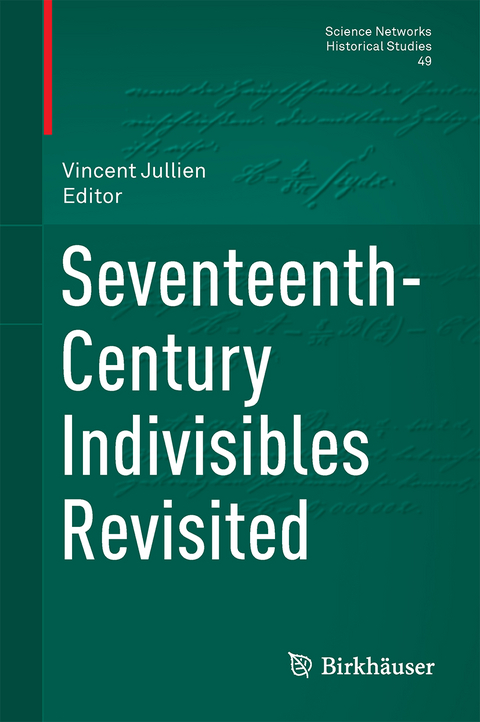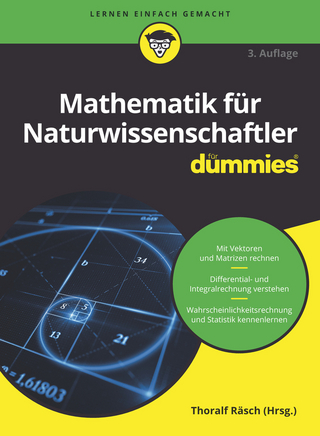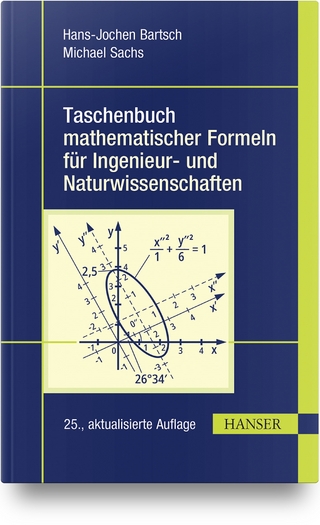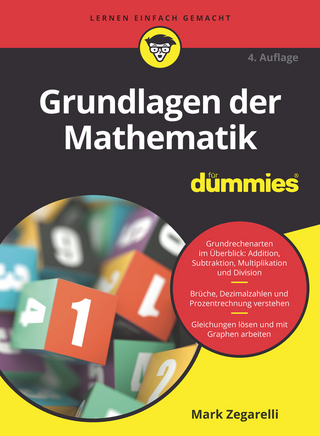
Seventeenth-Century Indivisibles Revisited
Springer International Publishing (Verlag)
978-3-319-00130-2 (ISBN)
The tremendous success of indivisibles methods in geometry in the seventeenth century, responds to a vast project: installation of infinity in mathematics. The pathways by the authors are very diverse, as are the characterizations of indivisibles, but there are significant factors of unity between the various doctrines of indivisible; the permanence of the language used by all authors is the strongest sign.
These efforts do not lead to the stabilization of a mathematical theory (with principles or axioms, theorems respecting these first statements, followed by applications to a set of geometric situations), one must nevertheless admire the magnitude of the results obtained by these methods and highlights the rich relationships between them and integral calculus.
The present book aims to be exhaustive since it analyzes the works of all major inventors of methods of indivisibles during the seventeenth century, from Kepler to Leibniz. It takes into account the rich existingliterature usually devoted to a single author. This book results from the joint work of a team of specialists able to browse through this entire important episode in the history of mathematics and to comment it.
The list of authors involved in indivisibles´ field is probably sufficient to realize the richness of this attempt; one meets Kepler, Cavalieri, Galileo, Torricelli, Gregoire de Saint Vincent, Descartes, Roberval, Pascal, Tacquet, Lalouvère, Guldin, Barrow, Mengoli, Wallis, Leibniz, Newton.
Introduction.- 1 From Aristotle to the Classical Age : the Debate around Indivibilism.- 2 Cavalieri's Indivisibles.- 3 Kepler, Cavalieri, Guldin.- 4 Indivisibles in the Work of Galileo.- 5 Torricelli's indivisibles.- 6 The method of indivisibles that Gregory of Saint Vincent could have used for his own quadrature of Hyperbola.- 7 Descartes and the use of indivisibles.- 8 Roberval's indivisibles.- 9 Pascal's indivisibles.- 10 Two jesuits against indivibles, Lalouvère and Tacquet.- 11 Isaac Barrow's indivisibles.- 12 The role of indivisibles in Mengoli´s quadratures.- 13 Wallis on indivisibles.- 14 Leibniz's rigorous foundations of the method of indivisibles.- 15 Newton on indivisibles.-16 An epistemological route in the historiography on indivisibles.- 17 Archimedes and indivisibles.- 18 Indivisibles and Latitude of Forms.- 19 How to explain the use of the term indivisibles as late as 1700 for the discovery of multiple rainbows?
"This book, which contains contributions by twelve historians of mathematics, provides a fascinating insight into the background and the rise of new ways of handling indivisibles in the 17th century. ... The editor, Vincent Jullien, has given the book a unity that is praiseworthy and (almost) indivisible." (William R. Shea, Mathematical Reviews, May, 2016)
| Erscheint lt. Verlag | 2.6.2015 |
|---|---|
| Reihe/Serie | Science Networks. Historical Studies |
| Zusatzinfo | VI, 499 p. 231 illus., 70 illus. in color. |
| Verlagsort | Cham |
| Sprache | englisch |
| Maße | 155 x 235 mm |
| Gewicht | 890 g |
| Themenwelt | Mathematik / Informatik ► Mathematik ► Allgemeines / Lexika |
| Mathematik / Informatik ► Mathematik ► Geschichte der Mathematik | |
| Schlagworte | Epistemology • indivisibles • Modern Science |
| ISBN-10 | 3-319-00130-2 / 3319001302 |
| ISBN-13 | 978-3-319-00130-2 / 9783319001302 |
| Zustand | Neuware |
| Haben Sie eine Frage zum Produkt? |
aus dem Bereich


